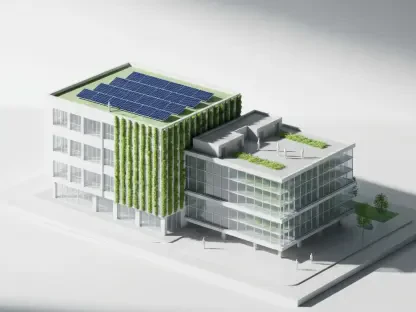The housing sector faces significant challenges, sparking the formation of the Build-to-Rent Alliance, which aims to reinvigorate the market through strategic collaboration. A partnership between the British Property Federation (BPF) and the Association for Rental Living (ARL), this alliance seeks to champion the build-to-rent sector as a solution amid declining growth. However, the housing landscape remains complex, with concerns rooted in economic and policy shifts affecting the industry’s trajectory. Recent data highlights a concerning trend: the number of project completions continues to exceed new project initiations for six straight quarters, revealing diminishing enthusiasm for new ventures. As new schemes have seen an 18% drop in planning since the beginning of the year, the sector seeks innovative avenues and approaches to surmount challenges and strategically invest in future growth.
Challenges Facing Build-to-Rent Sector
Economic and Policy Impact
The housing market’s slowdown poses a critical issue for the build-to-rent sector, primarily driven by unfavorable economic conditions and regulatory hurdles. Melanie Leech, a prominent figure within the British Property Federation, noted that despite an impressive trajectory over the past decade, the sector’s growth has stalled due to a confluence of economic pressures and policy-related obstacles. At its core, this impasse results from a misalignment between economic realities and regulatory frameworks, producing delays and increased costs for new developments. Efforts to sustain growth are further hampered by regulatory bottlenecks, such as those from the Building Safety Regulator, where significant delays further stifle timely project delivery. The intricate dance of grappling with policy challenges while navigating economic uncertainties calls for concerted efforts and unified action to reignite industry momentum.
Regional Disparities
While London’s planning activities have increased by 16%, other regions paint a starkly different picture; they remain stagnant, showing no growth whatsoever. This disparity underscores a deeper issue, one that requires careful attention to localized strategies and tailored interventions. The lack of regional engagement reflects not just a geographical imbalance but points to broader systemic issues inherent in the implementation of build-to-rent projects. Leaders within the industry are increasingly aware of the necessity to propel awareness and understanding of build-to-rent offerings at the local levels. To bridge these gaps, the Build-to-Rent Alliance aims to forge stronger ties with local authorities, emphasizing the advantages of build-to-rent properties and seeking to create environments conducive to region-wide development growth. A nuanced approach to regional planning could significantly alter current growth trajectories and empower local economies.
Strategic Efforts to Revitalize the Sector
Advocacy for Policy Reforms
The Build-to-Rent Alliance centers its attention on advocating for comprehensive policy reforms as the lynchpin for future sector revitalization. Through collaborative dialogues, key players within the Alliance emphasize the need for structural changes that not only accommodate present-day realities but foster sustainability and growth. By disseminating information and raising awareness of build-to-rent benefits, they plan to reshape perceptions among policymakers and the community alike. There is a strong push to introduce a new Consumer Code aimed at enhancing consumer experiences and reshaping public perception, countering any negative biases currently affecting appeal. These proactive measures signify an effort to create an ecosystem where legislation effectively supports innovative housing solutions, streamlining processes, reducing delays, and encouraging investment in new projects.
Promoting Build-to-Rent as a Viable Choice
Efforts by Brendan Geraghty of the Association for Rental Living are pivotal in promoting build-to-rent properties as a viable housing choice, reinforcing consumer trust and highlighting their role in urban revitalization. By advocating for the myriad benefits of build-to-rent models, the Alliance plans to showcase their potential in rejuvenating town centers and contributing to economic growth. Already, the impact of build-to-rent projects has been felt in diverse urban landscapes, where thriving communities are testament to their success. Increasing awareness among consumers and local authorities through enhanced engagement strategies embodies a transformative approach to housing challenges. By adapting their outreach methods to effectively target diverse stakeholders, they endeavor to elevate build-to-rent properties to the forefront of viable housing options, changing the trajectory of housing perceptions.
Future Considerations for Housing Development
In recent years, the housing sector has been witnessing a shift towards the demand for innovative solutions such as build-to-rent properties, drawing attention as practical responses to contemporary housing challenges. The formation of the Build-to-Rent Alliance signifies a pivotal moment in shaping strategic interventions, with efforts centered on addressing regulatory setbacks and regional growth disparities. As the Alliance implements consumer-focused models and champions holistic policy reforms, these developments are anticipated to facilitate renewed project deliveries and support economic rejuvenation. This revitalization highlights the potential for build-to-rent properties to usher in broader urban renewal and redefine housing strategies. By signaling the importance of collaborative partnerships, the Alliance sets a precedent for future considerations, laying the groundwork for sustainable growth within an evolving housing landscape.









